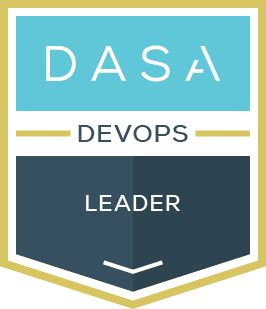The evolution of distributed engineering teams has transformed how organizations operate, especially in a DevOps culture. The shift from localized, market-specific offices to global, distributed teams has opened up access to a broader talent pool and driven significant changes in management practices. This article explores strategies for successfully managing distributed teams in a DevOps culture, highlighting the importance of talent, culture, and systems.
The Evolution of Distributed Engineering Teams
Distributed engineering teams have a rich history that spans several decades. Initially, large companies began outsourcing engineering tasks to India in the 1990s, taking advantage of cost efficiencies. By the 2000s, this practice expanded to other regions, including Latin America, Eastern Europe, and parts of Africa. The 2010s saw the rise of the gig economy, with individual specialists contributing to distributed projects. The COVID-19 pandemic in 2020 accelerated the adoption of remote work, making distributed teams a necessity.
Leveraging the Global Talent Pool
Recognizing that talent exists everywhere is fundamental to building effective distributed teams. Organizations should broaden their talent pool by seeking top talent from diverse geographical locations. This not only enhances team quality, but also fosters an environment where top performers thrive.
Attributes of Effective Team Members
When building a distributed team, focus on individuals who:
- Work well independently
- Appreciate accountability
- Are outcome-focused
- Value and respect communication
These characteristics ensure that team members can thrive in a distributed environment, maintaining high productivity and collaboration levels despite physical distances.
Cultivating a Collaborative Culture
A strong organizational culture is critical to the success of distributed teams. Understanding and leveraging cultural differences can enhance collaboration and innovation. Erin Meyer’s book, “The Culture Map,” provides valuable insights into how cultural backgrounds influence communication, leadership, and decision-making. Understanding these differences helps in building a cohesive team that respects and leverages diverse perspectives. Some of these differences include:
- Definition of Time: Different cultures perceive time differently. For instance, Germans may have a stricter sense of punctuality compared to Latin Americans.
- Communication and Feedback: The style and frequency of communication can vary significantly across cultures.
- Leadership Styles: Some cultures are more hierarchical, while others value inclusive decision-making.
- Trust Development: Trust is built differently across cultures; understanding this can enhance team cohesion.
Establishing Robust Processes
Engineering teams perform best with well-defined processes. Investing time upfront to establish clear roles, processes, and communication protocols can save time and prevent future issues. This begins with documenting roles and responsibilities, ensuring each team member understands their role, their responsibilities, and ownership of different project aspects, from design to testing.
Process alignment is also key. Mapping out the entire project process, using visual tools like flowcharts, helps identify potential bottlenecks and ensures everyone understands each stage. A shared definition of “done” for each milestone ensures all team members are aligned on deliverables. Finally, setting communication protocols for regular updates, such as daily stand-ups and milestone reviews, ensures focused and productive discussions, helping maintain project momentum.
Measuring Success
Establish key performance indicators (KPIs) to measure the success of your projects. Define what is being measured, when it is being measured, and who is responsible for the measurement. This ensures accountability and helps track progress towards project goals. Regularly review and adjust these KPIs to reflect the evolving needs of the project.
Leveraging Technology
Technology plays a crucial role in facilitating inclusive innovation. Tools that support collaboration, communication, and project management are essential for the success of distributed teams. Additionally, technology can help in identifying and mitigating biases, ensuring a more inclusive work environment.
Examples of these tools include:
- Project Management Tools: Tools like Trello and Asana help manage tasks and ensure transparency.
- Communication Tools: Platforms like Slack and Microsoft Teams facilitate real-time communication.
- Accessibility Tools: Software that supports closed captioning, text-to-speech, and other accessibility features ensures that all team members can participate fully.
Conclusion
Managing distributed teams in a DevOps culture requires a strategic focus on talent, culture, and systems. By recognizing the global talent pool, cultivating a collaborative culture, and establishing robust processes, organizations can harness the power of distributed teams. Embracing cultural differences and leveraging technology further enhances team effectiveness. Ultimately, these practices lead to better project outcomes, higher productivity, and a more inclusive work environment.


DASA DevOps Leader
Helps leaders understand leadership in the context of DevOps, discusses leadership development models, building teams, and transforming the organisation.
